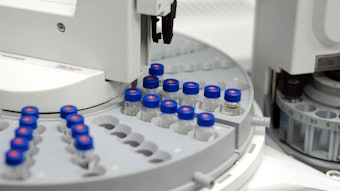TRI/Princeton has brought back its Conditioning Point-of-Entry Benchmarking Study, which allows manufacturers to test hair products for conditioning, anti-breakage strengthening, and anti-static flyaway reduction with shared controls and labor to reduce costs by up to 57%, compared with standard pricing. The company is accepting participants until Aug. 15, 2010.
According to the company, the foundation of a conditioning product's performance is its ability to lubricate hair to facilitate manageability and improve the feel. The way in which this effect is recounted to the consumer can take several forms, and many claims often result from extrapolations related to this benefit. Tests including wet combing performance, anti-breakage by repeated grooming, and reduction of static flyaway provide a dramatic means to illustrate the benefits associated with such products while also providing a means for comparing technical performance.
In this study, the technical performance of formulations will be compared with controls that are believed to represent extremes associated with commercially available products. Product forms suitable for such testing may include 2-in-1 shampoos, shampoo and conditioner systems and leave-in conditioners.
Conditioning/Wet Combing Performance
While conditioning is a consumer word, the primary technical function of most conditioning products is to lubricate the hair surface, and in doing so facilitate manageability and enhance feel properties. Thus, conditioning, manageability, smoothening and softening claims often arise from performing combing experiments that quantify a decrease in the frictional force.
Anti-breakage Experiments
A dramatic illustration of the protection provided by products arises from repeated grooming experiments. Surface lubrication reduces snags, entanglements and abrasion which can substantially lower the number of broken fibers. The magnitude of this effect is directly proportional to the level of lubrication provided. As such, these experiments are frequently employed to make anti-breakage and "strengthening" claims.
Static Flyaway Retardation
Under low humidity conditions, the reduction in moisture content of hair from everyday grooming leads to considerable buildup of static electricity. That is, hair has an especially low conductivity and so resulting charges are not readily dissipated. Conditioner products can be very effective at reducing static electricity buildup.
Results from the study will be conveyed and interpreted in a formal report. To participate in the study, manufacturers must send samples to the company by Aug. 15, 2010. Pricing information is available in the promotional flyer.










